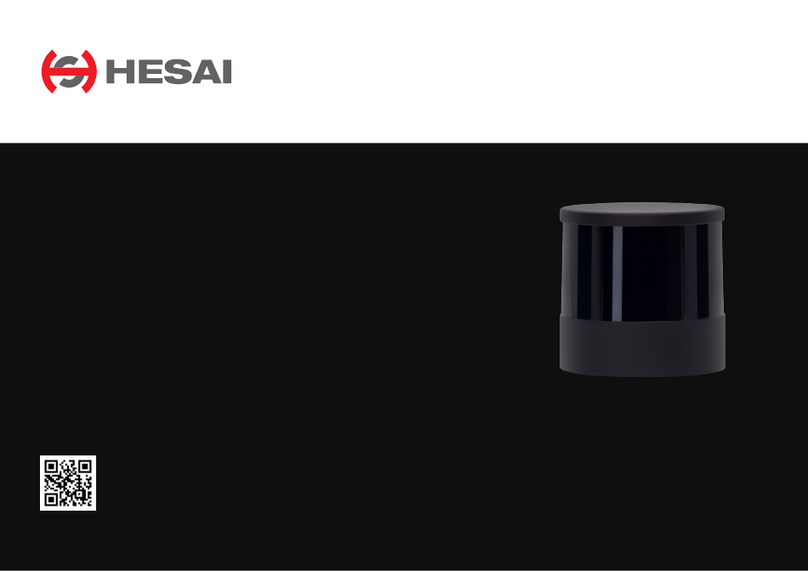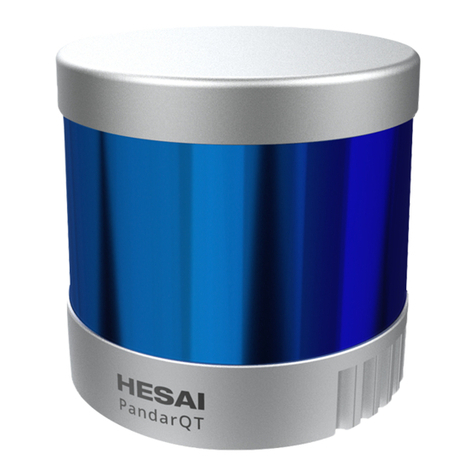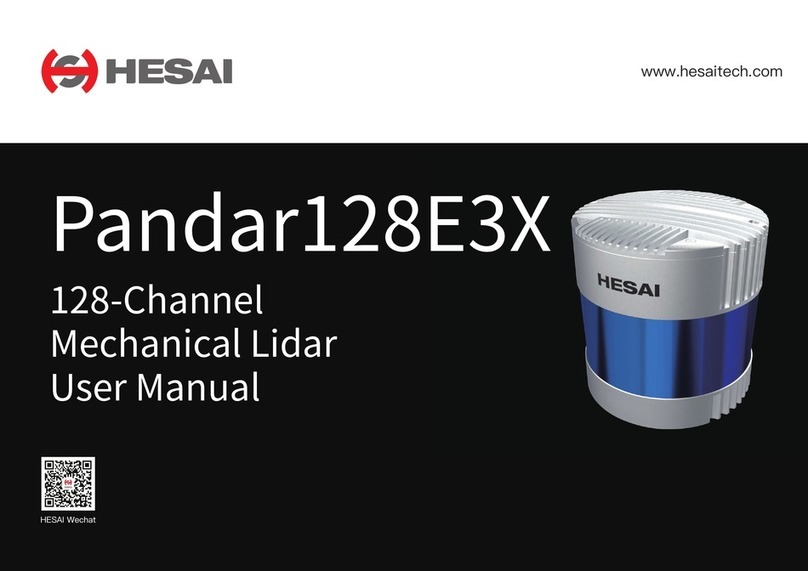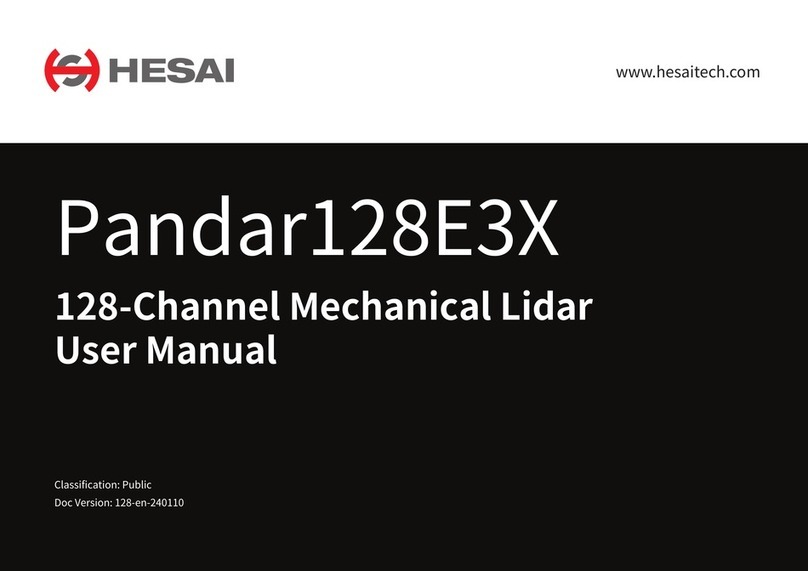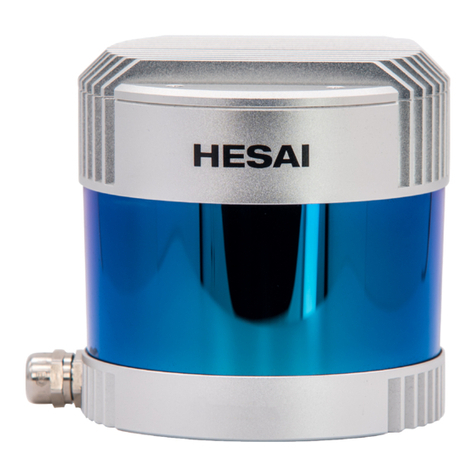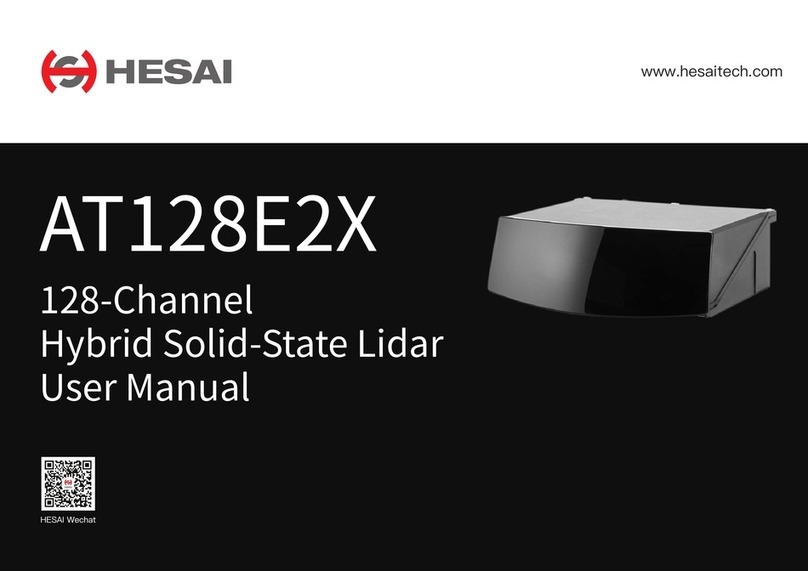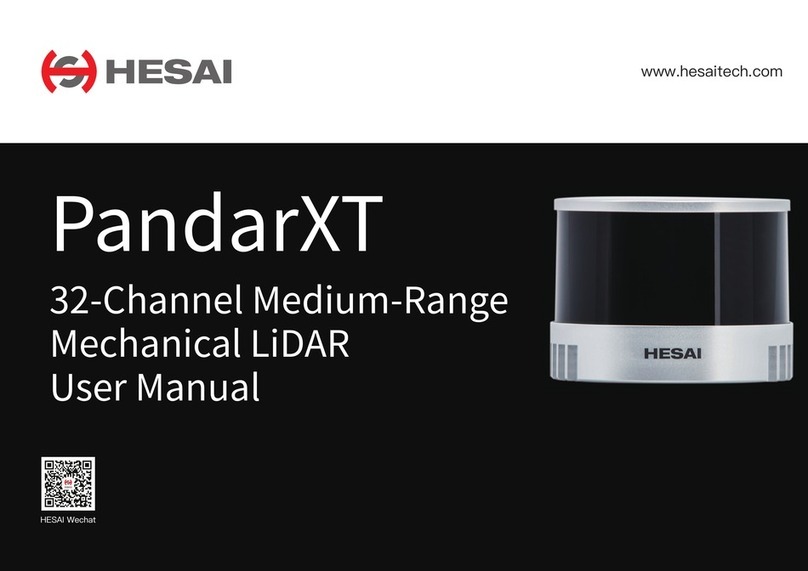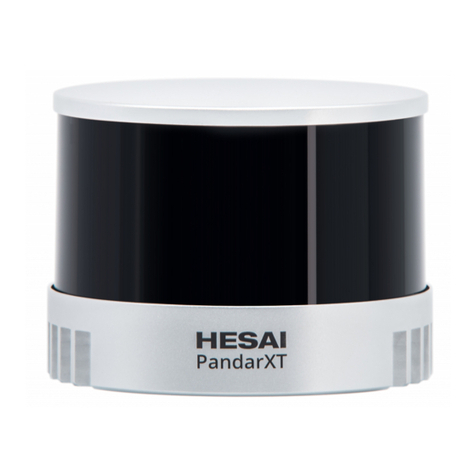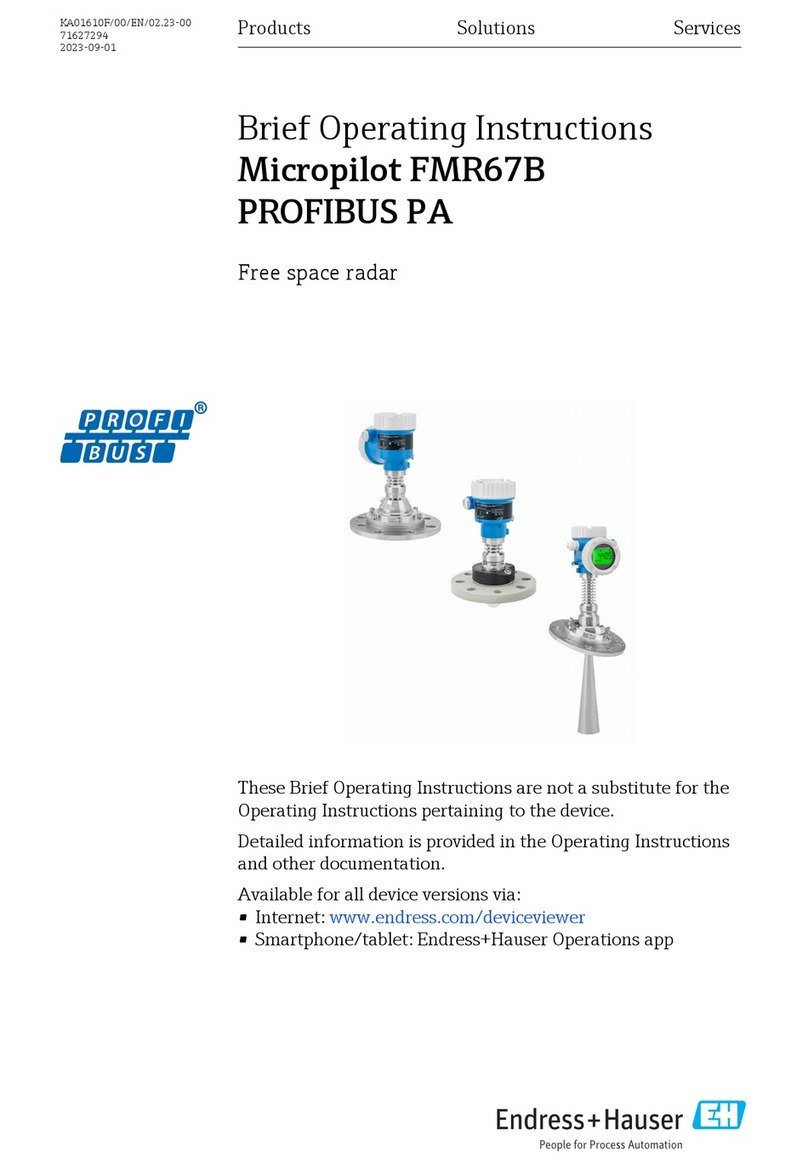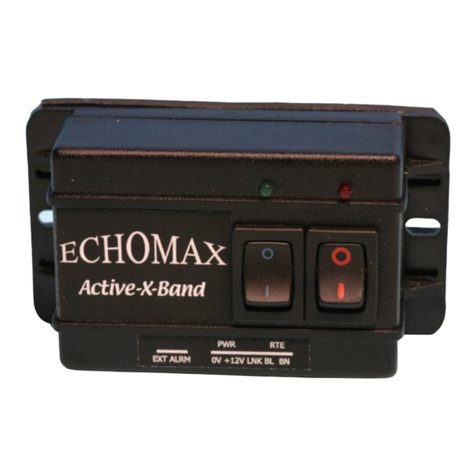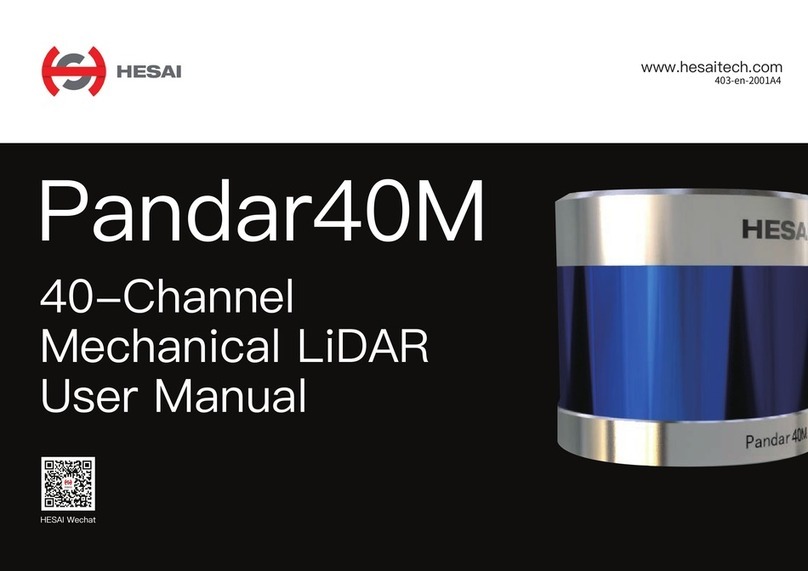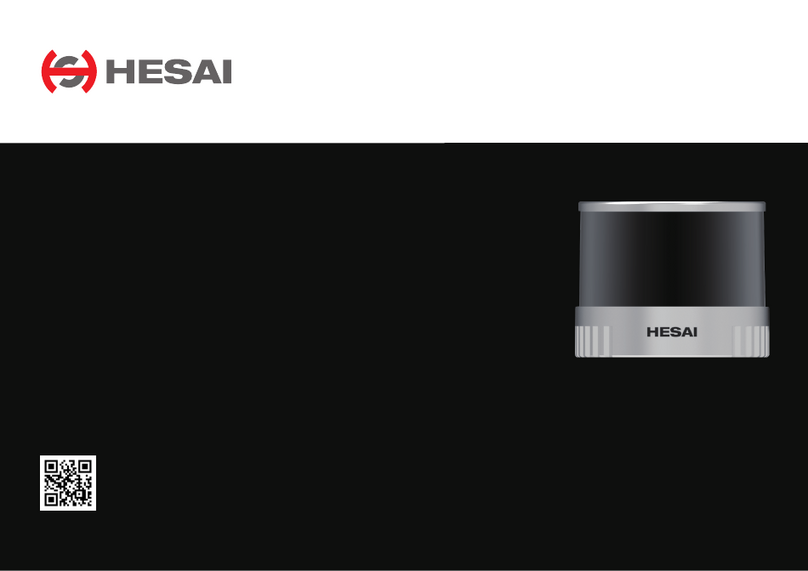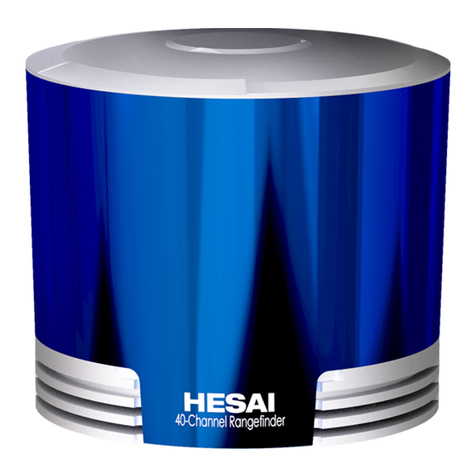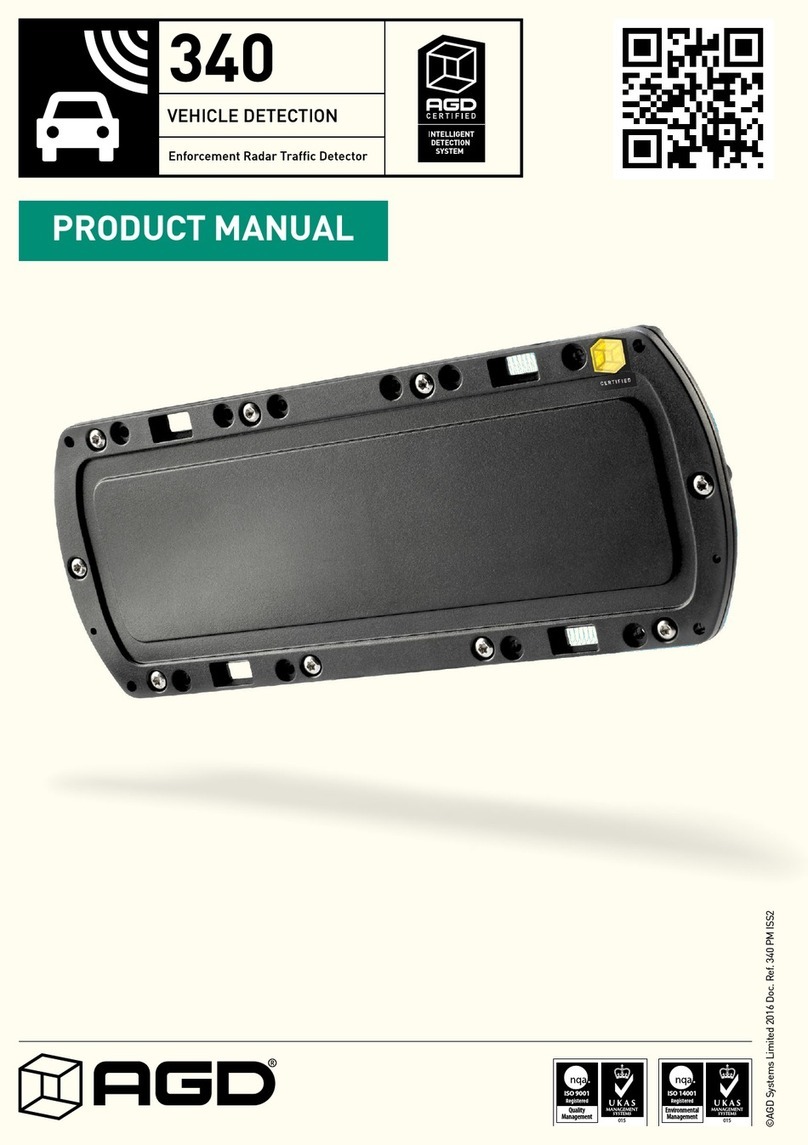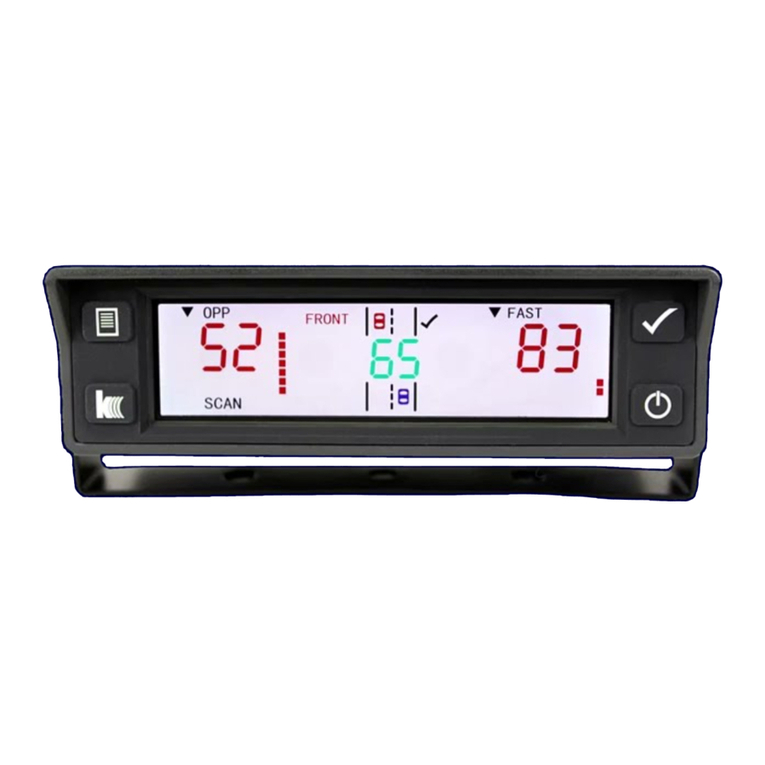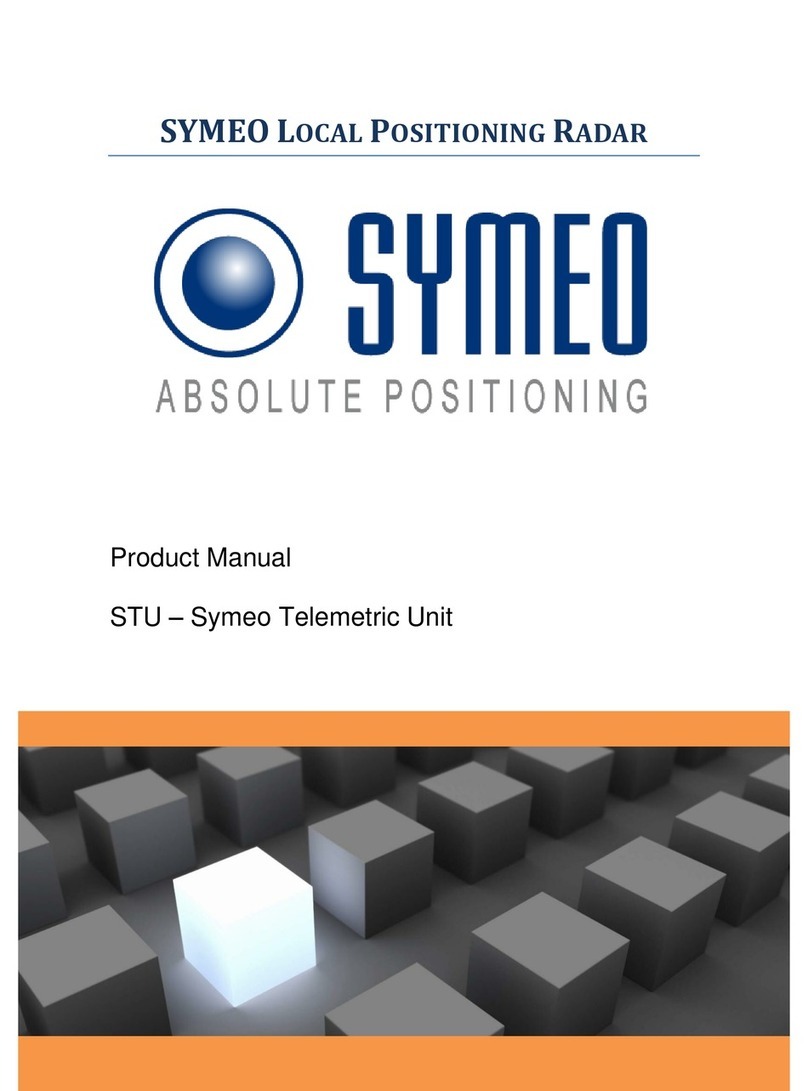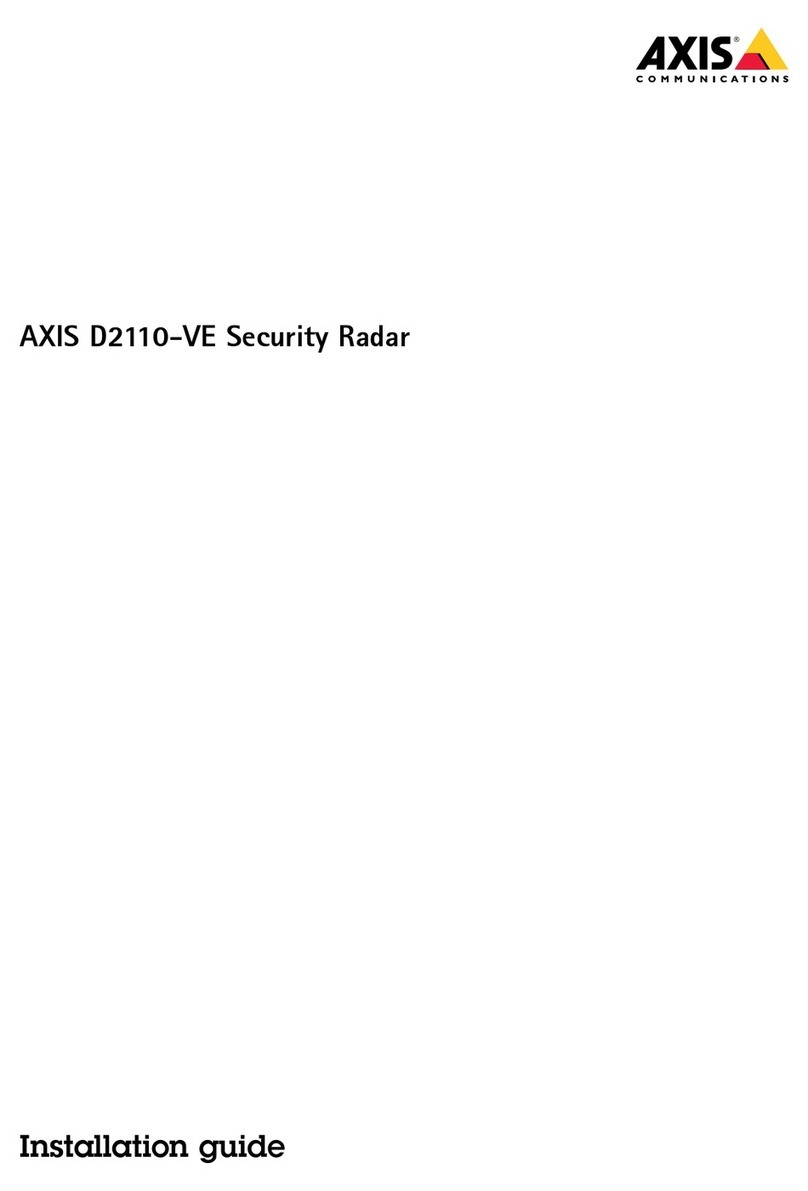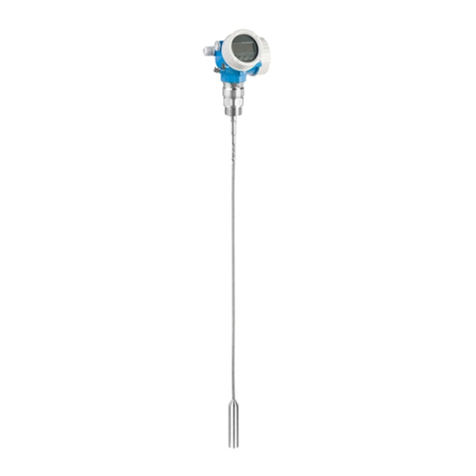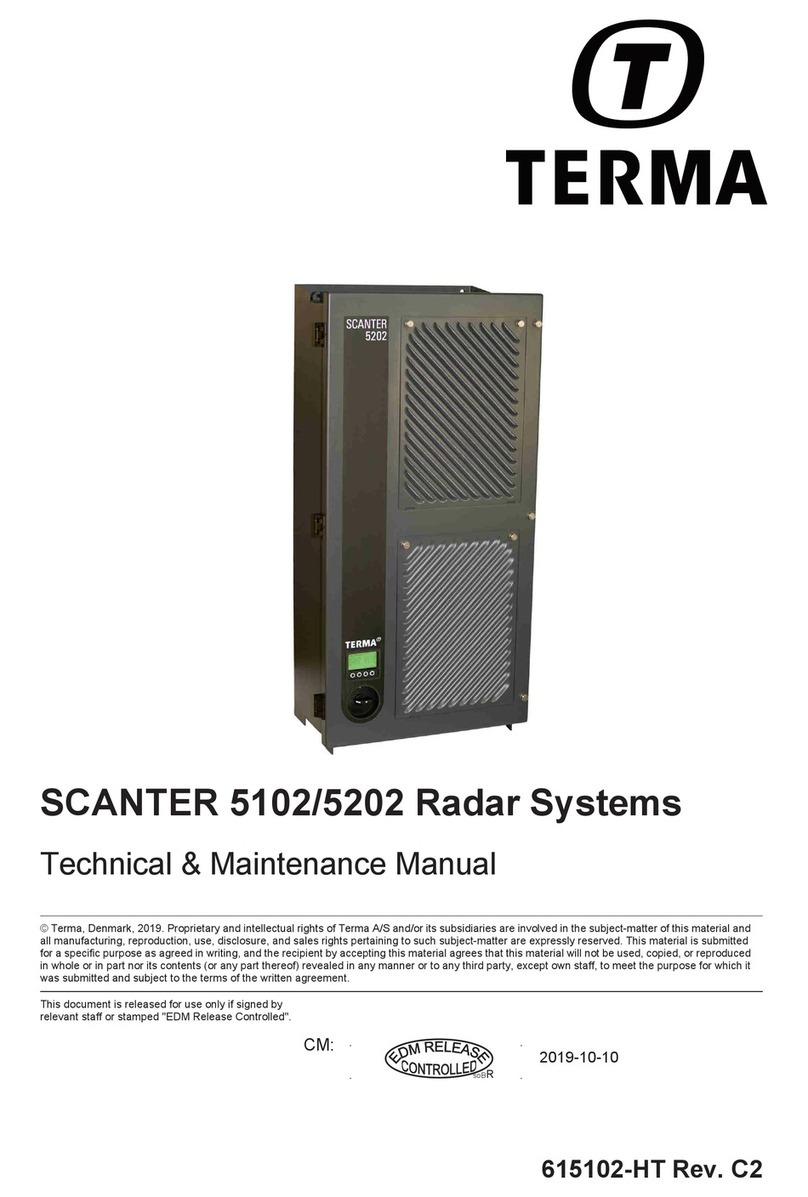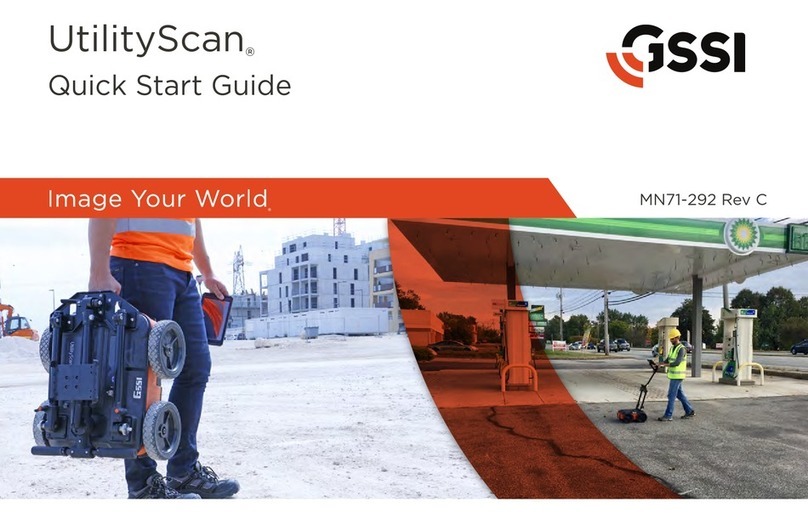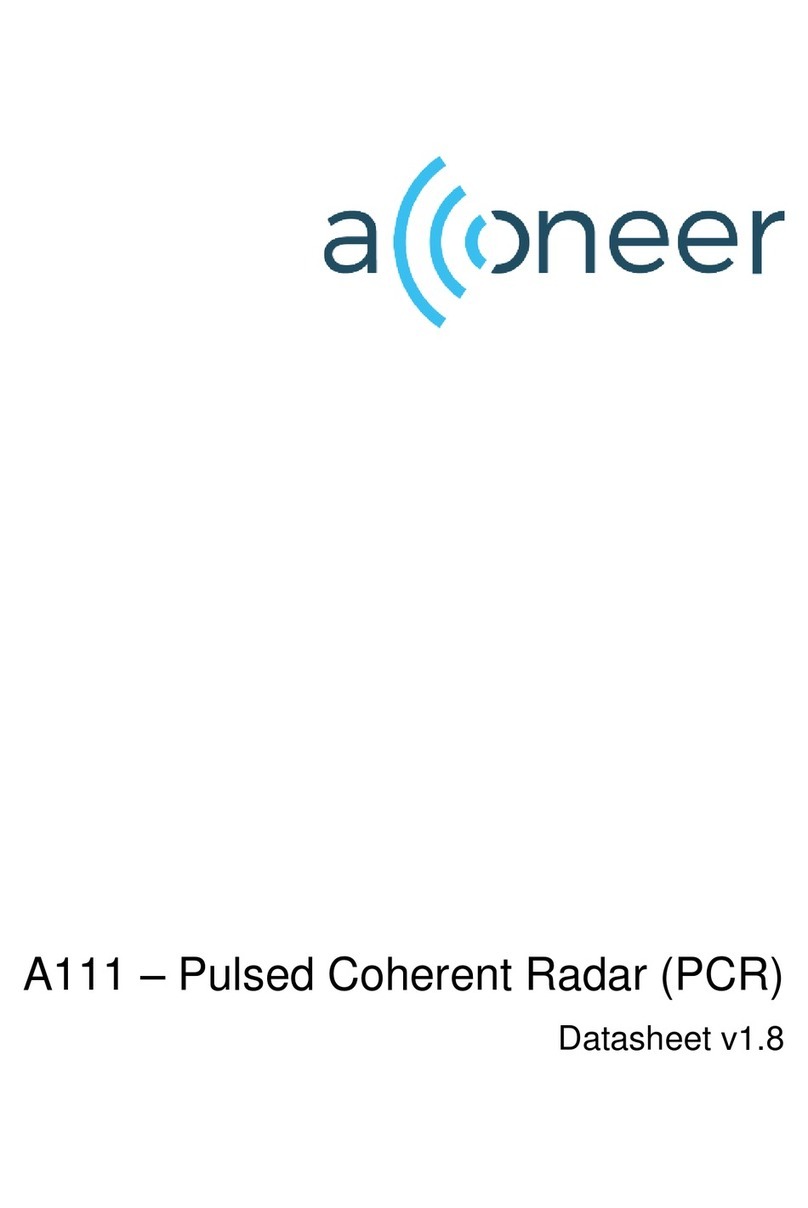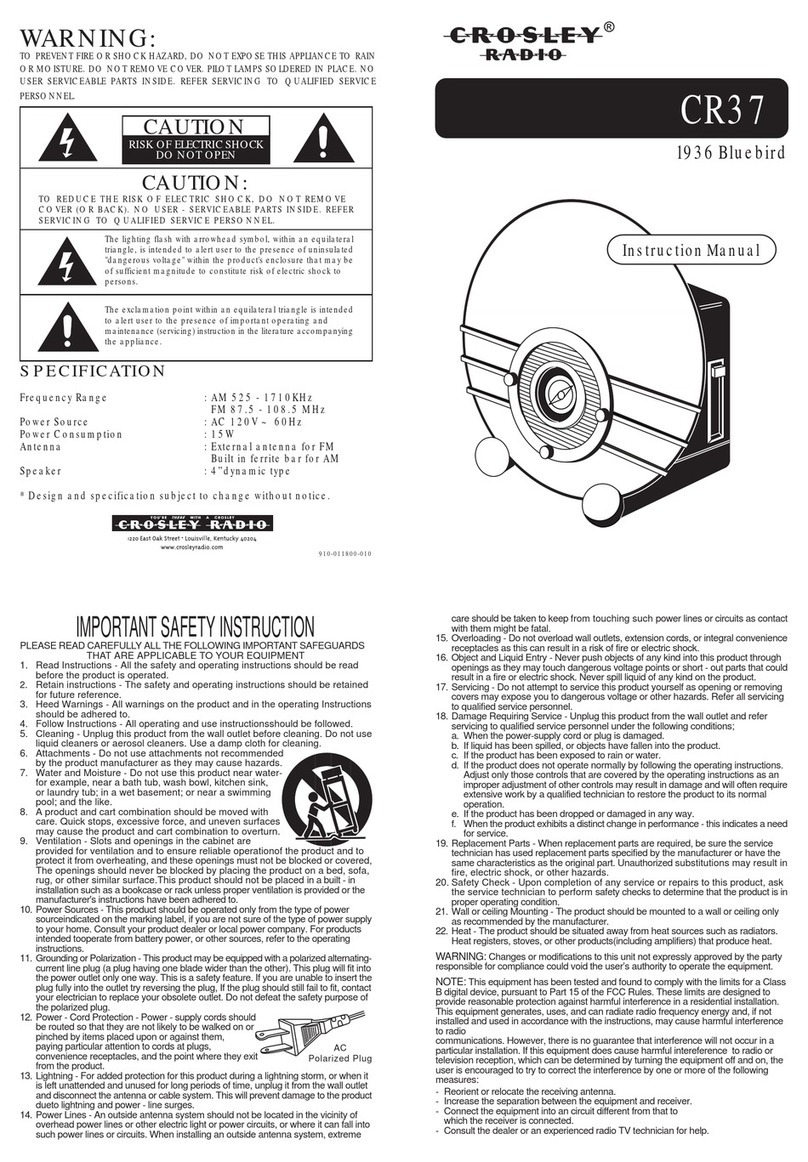Doc Version: 128-en-210510
Contents
Safety Notice................................................................................................ 1
1Introduction............................................................................................. 4
1.1 Operating Principle........................................................................ 4
1.2 LiDAR Structure .............................................................................. 5
1.3 Channel Distribution...................................................................... 6
1.4 Specifications................................................................................. 7
2Setup........................................................................................................ 9
2.1 Mechanical Installation.................................................................. 9
2.2 Interfaces...................................................................................... 13
2.3 Connection Box (Optional) .......................................................... 17
2.4 Get Ready to Use .......................................................................... 22
3Data Structure........................................................................................ 23
3.1 Point Cloud Data Packet .............................................................. 24
3.2 GPS Data Packet........................................................................... 36
4Web Control........................................................................................... 42
4.1 Home ............................................................................................ 43
4.2 Settings......................................................................................... 44
4.3 Azimuth FOV ................................................................................. 51
4.4 High Resolution............................................................................ 53
4.5 Operation Statistics...................................................................... 54
4.6 Monitor ......................................................................................... 55
4.7 Upgrade ........................................................................................ 56
4.8 Log.................................................................................................57
4.9 Security .........................................................................................58
4.10 Login..............................................................................................63
4.11 Cybersecurity Configuration........................................................64
5PandarView............................................................................................ 72
5.1 Installation....................................................................................72
5.2 Check Live Data ............................................................................73
5.3 Record Point Cloud Data..............................................................75
5.4 Play Point Cloud Data ..................................................................76
5.5 Features ........................................................................................78
6Communication Protocol ...................................................................... 84
7Sensor Maintenance..............................................................................85
8Troubleshooting ....................................................................................87
Appendix I Channel Distribution ...............................................................90
Appendix II Absolute Time and Laser Firing Time .................................... 98
Appendix III PTP Protocol........................................................................ 108
Appendix IV Nonlinear Reflectivity Mapping .......................................... 110
Appendix V Certification Info...................................................................120
Appendix VI Support and Contact........................................................... 121
